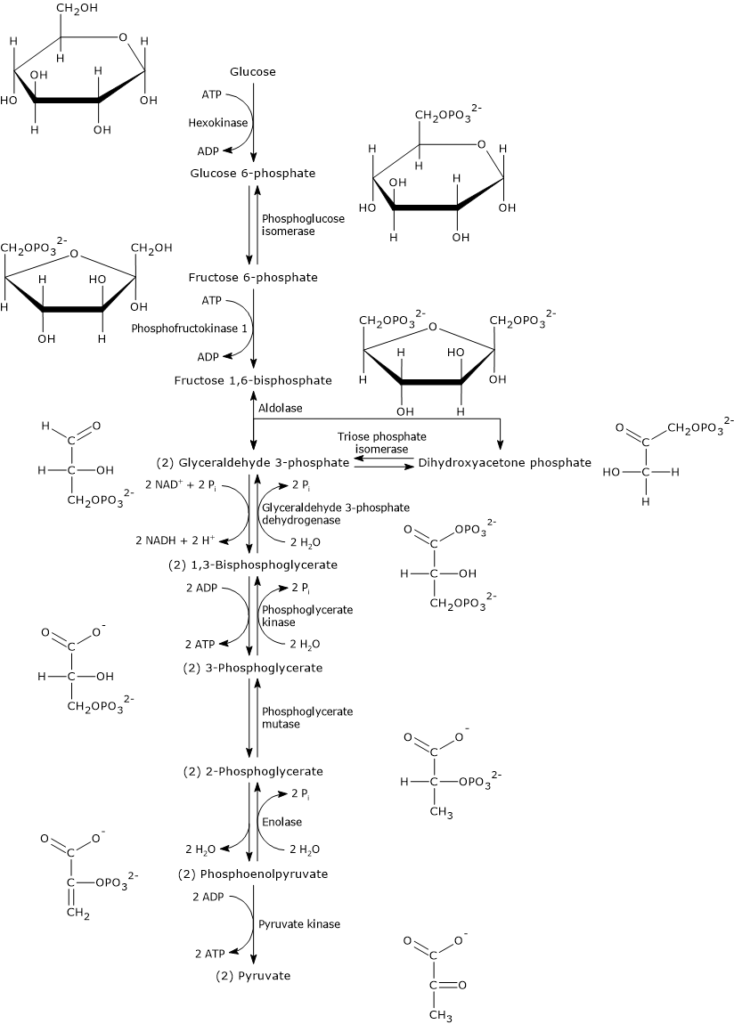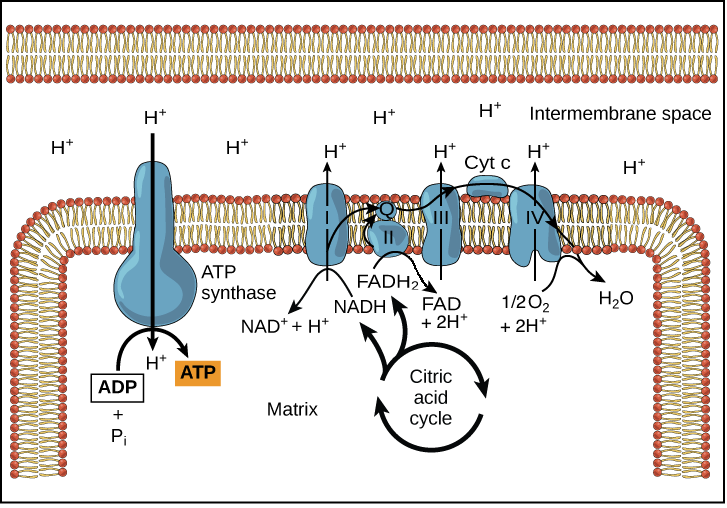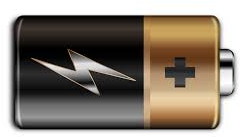When Adp Gains a Phosphate to Form Atp
ADP is combined with a phosphate to form ATP in the following reaction. The two-stranded phosphate group of ADP requires energy to bond it to an additional phosphate.

Atp Adenosine Triphosphate Boundless Biology
When ADP gains a phosphate to form ATP how does this affect energy.

. What happens when ADP gains a phosphate. In the energy production cycle in the chloroplasts and mitochondria energy is stored when ATP is produced from ADP and a phosphate group P. Please observe the molecule attached to this question.
Phosphorylation is the addition of a phosphate to ADP to form ATP. An Adenosine triphosphate molecule contains three phosphate radicals ribose sugar and _____. Reduction is the loss of oxygen atom from a molecule or the gaining of one or more electrons.
Do Plants Use Adp Or Atp. Energy is released as heat. Animals and plants uses ATP - ADP cycle to carry out cellular respiration.
Click again to see term. Energy is lost as heat when ATP loses a phosphate group to form ADP. When ADP gains a phosphate to form ATP A.
For instance in order for a phosphate to bond to ADP a catalyst is needed. What happens during a reduction reaction. ADPP i free energyATPH 2 O.
ATP and Energy Coupling. Building anabolic endergonic reaction using energy energy is consumed. What makes ATP in a cell.
This reaction requires a substantial input of energy much of which is captured in the bond that links the added phosphate group to ADP. Tap card to see definition. Tap again to see term.
In light reaction of photosynthesis ADP is phosphorylated to form ATP which is used in the dark reaction of the photosynthesis in order to fix the carbon obtained from carbon dioxide into the sugars or glucose. A phosphate group is removed from an intermediate reactant in the pathway and the free energy of the reaction is used to add the third phosphate to an available ADP molecule producing ATP Figure 2. Adenosine diphosphate ADP can provide more energy than AMP.
The ATPADP cycle provides energy for cellular activity. The energy within an ATP molecule is stored in the phosphate bonds of the ATP. The correct answer would be ADP gains a phosphate group to create ATP which stores energy for making sugars.
When a phosphate group is removed from ATP electrons are removed and the reaction is called oxidation reaction. ATP - P ADP. Ribose loses an oxygen to become deoxyribose.
Each MPT molecule forms a solid energy storage battery. The correct answer would be ADP gains a phosphate group to create ATP which stores energy for making sugars. ADP P ATP Dephosphorylation is the removal of a phosphate from ATP to form ADP.
26 when ADP gains a phosphate to form ATP energy is consumed as it is a condensation endoergic reaction G. The energy released from the hydrolysis of ATP into ADP is used to perform cellular work usually by coupling the exergonic reaction of ATP hydrolysis with endergonic reactions. The energy released from the hydrolysis of ATP into ADP is used to perform cellular work usually by coupling the exergonic reaction of.
The energy released from the hydrolysis of ATP into ADP is used to perform cellular work usually by coupling the exergonic reaction of. Two such reactions both are reactions in the glycolytic pathway of glucose metabolism. Chemical energy is converted to light energy.
The loss of a phosphate releases free energy when ADP acquires a phosphate to make ATP. This process is mostly dependent upon the addition and subtraction of a phosphate molecule and the energy required to bond the phosphate to ADP to form ATP. Free energy is released by the loss of a phosphate.
Adenosine plus three phosphate groups gives us ATP. Terms in this set 20 When ADP gains a phosphate to form ATP a. In ATP there are three phosphate groups with two high-energy bonds as shown in the image below.
Energy is used up. Question 26 When ADP gains a phosphate to form ATP e free energy is released by the loss of a phosphate. Substrate-level phosphorylation is of relatively minor importance in ensuring a supply of ATP although it.
Energy is consumed o activation energy is produced chemical energy is converted to lightenersy the. When a molecule looses a hydrogen atom it becomes. The process of phosphorylating ADP to form ATP and removing a phosphate from ATP to form ADP in order to store and release energy respectively is known as the ATP cycle.
View the full answer. Exactly how much free energy G is released with the hydrolysis of ATP and how is that free energy used to do cellular work. ADP is combined with a phosphate to form ATP in the reaction ADPPifree energyATPH2O.
When energy is necessary the third phosphate group breaks off. Click card to see definition. The conversion of light energy to ATPgroup to a molecule of adenosine diphosphate ADPor to state it in chemical terms by the phosphorylation of ADP.
When a cell needs energy a phosphate is removed from ATP. Adenosine bonded to two phosphate groups is ADP. Free energy is released by the loss of a phosphate.
This occurs in your body every time you move a muscle which causes ATP to be converted into ADP. What happens when ATP gains a phosphate to form ATP. The process of photosynthesis.
A cell gains power as the plant breaks down food by turning it into oxygen after photosynthesis it takes back some of that energy by reattaching ADP free phosphate molecule that forms to get oxygen out of food in the case of plants. A weak chemical bond forms. Chemical energy is converted to light energy.
A small number of metabolic reactions involve direct transfer of phosphate from a phosphorylated substrate onto ADP forming ATP substrate-level phosphorylation. During the conversion of ATP to ADP a molecule of water is a reactant. This very direct method of phosphorylation is called substrate-level phosphorylation.
ADP is combined with a phosphate to form ATP in the reaction ADPPifree energyATPH2O. The calculated G for the hydrolysis of one mole of ATP into ADP and P i is 73 kcalmole 305 kJmol. ADP is combined with a phosphate to form ATP in the reaction ADPPifree energyATPH2O.
In light reaction of photosynthesis ADP is phosphorylated to form ATP which is used in the dark reaction of the photosynthesis in order to fix the carbon obtained from carbon dioxide into the sugars or glucose. In the reaction of ATP to ADP electrons are transferred by the phosphate group which contains electrons. How does ADP gains a phosphate.

Atp Adenosine Triphosphate Boundless Biology

Glycolysis Steps Enzymes And Products Tuscany Diet

Respiration A Level The Science Hive

Solved Question 26 When Adp Gains A Phosphate To Form Atp E Chegg Com

Oxidative Phosphorylation Biology Article Khan Academy

Energy In Breaking Bonds Atp And Adp

Substrate Level Phosphorylation An Overview Sciencedirect Topics
Oxidative Phosphorylation Boundless Biology

Adenosine Diphosphate An Overview Sciencedirect Topics

Atp Adp Cycle Flashcards Quizlet

Solved Question 26 When Adp Gains Phosphate To Form Atp Free Energy Is Released By The Loss Ofa Phosphate Enerzyis Consumed Activation Energy Is Produced Chemical Enerzy Is Converted To Light Eners The








Comments
Post a Comment